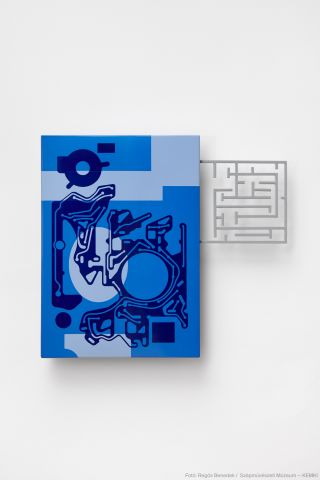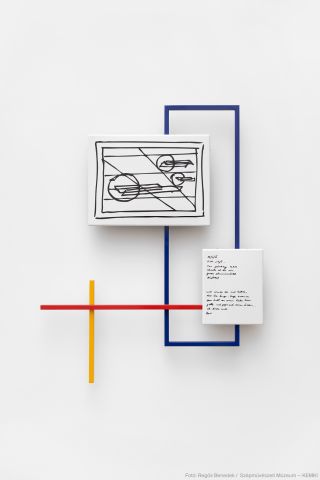‘ADK’
ALBERT Ádám: My Appropriations (Dezső Korniss), 2022
… First District. The black and white photographs showing Dezső Korniss’s (1908–1984) work (KEMKI ADK Inv. No.: 25001/2014/Korniss Dezső/1-3) belong to the public sculpture register, which comprises part of the 500 metres of documents that originally belonged to the Lectorate of Fine and Applied Arts, but have, since 2014, been kept at ADK’s predecessor, the Data Archives of the Hungarian National Gallery. The mosaic of the Esperanto Fountain is, on the one hand, an early and qualitative …
ALBERT Ádám: My Appropriations (Lili Ország), 2022
… printing plate—to create the images of the Labyrinth. The object under inventory number KEMKI ADK 21300/1981/L/34 served as the starting point for Albert’s work. The character of the strange hybrid shape of the blueprint-labyrinth-human—invoking the essence of Lili Ország’s art—is amplified by the bluish-toned colour scheme, as well as by a subsequent layer of enlarged, architectonic forms (also originating from the printed circuit board). The portrait-oriented enamel panel on the right …
ALBERT Ádám: My Appropriations (József Rippl-Rónai), 2022
… lamps, embroidered tapestries, ceramics, and glassware—were designed by Rippl-Rónai (KEMKI ADK 5118/1950/I/ 132, 134, 142). The butterfly in the fourth piece reproduces the main motif of the cover design for the 1925 edition of Zsigmond Móricz’s book Butterfly – Idyll , published by Athenaeum, Budapest (KEMKI ADK 26007_2020_39a). By turning their surfaces from concave to convex, Albert “inverts” these compact elements of a past time—which have only survived in fragments—and …
ALBERT Ádám: My Appropriations (Mihály Munkácsy), 2022
… (1844–1900) constitutes the oldest part—and perhaps one of the most valuable portions—of the KEMKI ADK collection. In addition to the documents, it also contains his relics: his furniture, the plaster cast of his right hand, his palette, his mourning ribbon, and the silver laurel wreath given to Mihály Munkácsy in 1882 by his fellow artists along with the National Hungarian Society of Fine Arts (KEMKI ADK Inv. No. 4003/1941)—which, in the present work, appears as a silhouette. The collection …
ALBERT Ádám: My Appropriations (László Moholy-Nagy), 2022
… overall dimensions: 80 x 107 cm For this composition, Ádám Albert used a letter (Inv. No. KEMKI ADK MNB-NL-1175/2015) connected to the oeuvre of László Moholy-Nagy, one of the great pioneers of Hungarian photography. The material of which the letter comprises a part was acquired by the Hungarian National Bank from the artist’s nephew, Levente Nagy in 2015. The collection primarily aids in scholarly research. In addition to lists of artworks, books and other publications, it also includes a …




